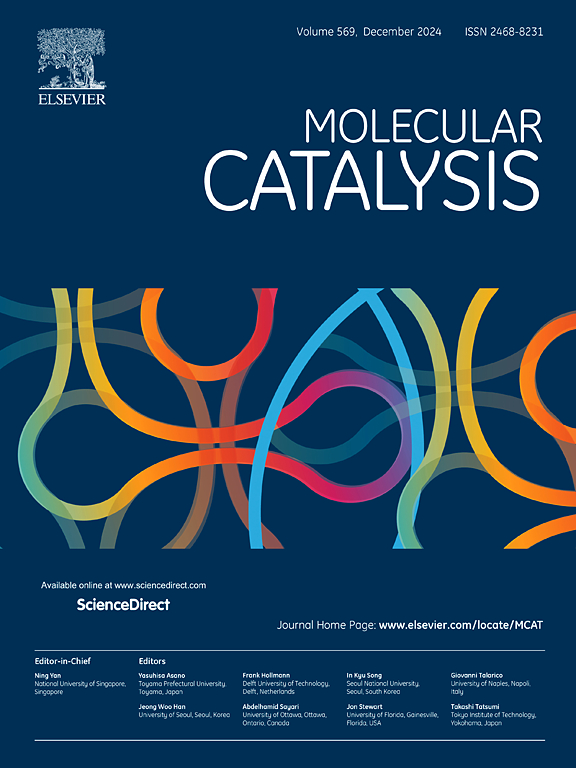Engineering ketoreductase via combined semi-rational and deep learning strategies for production of hydroxypropyl tetrahydropyranetriol
IF 3.9
2区 化学
Q2 CHEMISTRY, PHYSICAL
引用次数: 0
Abstract
Hydroxypropyl tetrahydropyranetriol (HT), an important cosmetic raw material, has attracted wide attention due to its remarkable skincare effects. To overcome the issues of high pollution and purification challenges associated with its chemical synthesis, enzyme-catalyzed biosynthesis has emerged as a favorable alternative. In this study, a ketoreductase cloned from Scheffersomyces stipitis CBS 6045 (SsCR), capable of asymmetrically reducing carbonyl compounds to produce chiral alcohols, was used to synthesize HT. We implemented a multi-combination screening strategy, integrating computer-aided semi-rational design and deep-learning technology, to systematically identify potential mutation sites in ketoreductase, followed by site-directed and combinatorial mutagenesis. Experimental validation showed that the enzyme activity of mutant SsCR-M2 increased by 86.7 % (9.60 U·mg⁻¹), compared to wild-type (WT) SsCR. Molecular docking and dynamics simulations indicated that SsCR-M2 possesses a more stable conformation, facilitating easier entry of β-acetoxyloside into the catalytic center. Notably, SsCR-M2 exhibited higher tolerance to elevated β-acetoxyloside concentrations compared to WT, successfully catalyzing the formation of 18.39 g·L⁻¹ of HT with a conversion rate of 91.93 %. These findings demonstrate the potential of engineered SsCR variants for sustainable HT production.
半理性和深度学习相结合的工程酮还原酶生产羟丙基四氢吡三醇
羟丙基四氢吡喃三醇(HT)是一种重要的化妆品原料,因其显著的护肤作用而受到广泛关注。为了克服与化学合成相关的高污染和净化问题,酶催化生物合成已成为一种有利的替代方法。本研究利用克隆自stipitis Scheffersomyces CBS 6045 (SsCR)的酮还原酶合成HT,该酶能不对称还原羰基化合物生成手性醇。我们实施了多组合筛选策略,结合计算机辅助半理性设计和深度学习技术,系统地识别酮还原酶的潜在突变位点,然后进行位点定向和组合突变。实验验证表明,与野生型(WT) SsCR相比,突变型SsCR- m2的酶活性增加了86.7% (9.60 U·mg⁻)。分子对接和动力学模拟表明,ssr - m2具有更稳定的构象,使β-乙酰氧基糖苷更容易进入催化中心。值得注意的是,与WT相比,ssr - m2对β-乙酰氧基糖苷浓度升高表现出更高的耐受性,成功地催化了18.39 g·L - 1的HT的形成,转化率为91.93%。这些发现证明了改造后的SsCR变体在可持续高温胁迫生产方面的潜力。
本文章由计算机程序翻译,如有差异,请以英文原文为准。
求助全文
约1分钟内获得全文
求助全文
来源期刊

Molecular Catalysis
Chemical Engineering-Process Chemistry and Technology
CiteScore
6.90
自引率
10.90%
发文量
700
审稿时长
40 days
期刊介绍:
Molecular Catalysis publishes full papers that are original, rigorous, and scholarly contributions examining the molecular and atomic aspects of catalytic activation and reaction mechanisms. The fields covered are:
Heterogeneous catalysis including immobilized molecular catalysts
Homogeneous catalysis including organocatalysis, organometallic catalysis and biocatalysis
Photo- and electrochemistry
Theoretical aspects of catalysis analyzed by computational methods
 求助内容:
求助内容: 应助结果提醒方式:
应助结果提醒方式:


